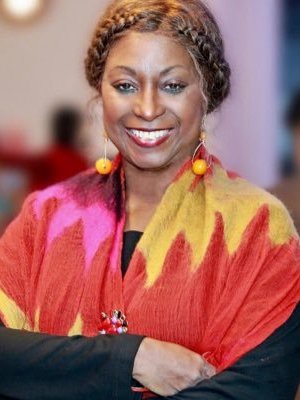DEI may be considered a “risk factor,” but the smart money will always be on those who understand its true value.
Long before Rupert Murdoch became the conservative firebrand who built the NewsCorp and Fox News empire that rails against diversity, equity, and inclusion (DEI), Murdoch was one of its savviest practitioners as the newspaperman who built the Fox Broadcasting Company.

At a time when conventional wisdom said there wasn’t room for a fourth television network, Murdoch and his team knew the only way to successfully break-in was to discover an untapped market. He found one —in Black audiences who had been devoted watchers of successful sitcoms like The Cosby Show, 227, and Amen.
The shows featured Black stars but had flown completely under the radar because the media research company Nielsen didn’t track Black households’ viewing habits until 1990 when Nielsen decided to expand its National Audience Demographic report. With the success of Black TV shows in the 1990s like Martin, Living Single, and In Living Color, Murdoch broke the mold by capitalizing on a market none of his competitors knew existed.
Murdoch would certainly blanch at being called a DEI pioneer today. But in a highly competitive global marketplace, the most successful leaders, and companies recognize future success rests largely on their ability to tap into new markets.
While some industries have diversified, others haven’t, and at their peril. As a result of the Biden Administration’s June 2021 executive order directing federal agencies to create DEIA plans and establish Chief Diversity Officers, the Securities and Exchange Commission (SEC) issued a DEI plan targeted toward the financial services industry which could enable the SEC to use its “regulatory authority to push the financial markets towards the implementation of DEI policies.” Meanwhile, according to the Government Accountability Office, 85% of financial services executives are White — and of the $82 trillion in U.S. markets, only 1.4% of those assets are managed by investment managers, or owned by women or people of color.
At a time when DEI criticism is heating up, few industries have as much to gain from leaning into diversity as the financial services industry. The epicenter of today’s workplace and homes, we all depend on financial services to deliver our wages and deposit our paychecks, to help us invoice our customers and pay our bills, and to insure our homes and businesses.
Increasingly, “we” includes people of color. Today, the combined buying power of Black Americans, Asian Americans, and Native Americans is estimated to be $2.4 trillion. The nation’s Hispanics command $1.5 trillion in spending power — that is larger than the GDP of Australia. The workplace is also becoming increasingly diverse: 85% of all new entrants in the American workforce are women, people of color, or immigrants.
In a global marketplace, winning on the domestic and global front requires looking at your business, customers, and workforce with an inclusive lens.
The good news is that financial services firms don’t have to reinvent the wheel. There are plenty of companies already leaning into diversity.
Since 2007, Brian Moynihan has chaired the Global Diversity & Inclusion Council — the chief governing body for Bank of America’s diversity and inclusion strategy. Bank of America drives a culture of inclusion. Over the last decade, the company has hosted thousands of courageous conversations with employees, external partners, and members of the community to cultivate awareness, inclusion, and understanding.
Moynihan created Courageous Conservations. The program features dialogues on topics from race and gender dynamics to the role of the White community in diversity, social justice, and inclusion in the workplace in the wake of violence in Dallas, Baton Rouge, Minneapolis, and its hometown, Charlotte. To date, it has reached over 60,000 employees, including the bank’s Board of Directors, global senior leaders, and local market presidents.
At Liberty Mutual Insurance, its CEO and President, Tim Sweeney, served as the executive co-sponsor of its Hispanic/Latino employee resource group (ERG) to immerse himself in an environment where he may be in the minority for the first time. For Sweeney, ERGs and mentorships with Black colleagues were opportunities for inquiry and learning. For the rest of his organization and stakeholders, his participation sent the unmistakable message that underrepresented employees are important.
Ron O’Hanley, the chairman and CEO of State Street, commissioned the Fearless Girl statue in New York’s Financial District; it went viral. He stood behind Rakhi Kumar, a South Asian woman who headed up the company’s asset stewardship division and pushed to use the company’s voting power to put more women on corporate boards.
There are countless examples. As far back as the 1990s, MetLife recognized the potential of the Asian-American consumer market, which had the highest income level among all races. The approach helped transform the company into an insurance powerhouse. Bob Rivers has taken a similar tack at the New England Regional Eastern Bank, engaging diverse customers, and diversifying his governance body in his position as chairman and CEO.
So, the next time Fox News goes into a DEI diatribe, don’t forget that its parent company leveraged diverse viewers to reap the financial rewards that made the network a powerhouse. The same can be true of financial services companies who understand that DEI isn’t about blaming, shaming, and guilting — but collaborating, communicating, and connecting to new markets and talent pipelines. While much is changing about what we expect from our companies and leaders, the enduring need for those qualities will remain the same.
Colette A.M. Phillips is President and CEO of the public relations firm Colette Phillips Communications, and Founder and President of Get Konnected! and The GK Fund. She is a strategic advisor for C-level executives and corporate teams and develops PR branding and internal/external communications strategies. She is frequently consulted by corporations and nonprofits on how to establish healthy, inclusive working environments and engage and serve culturally diverse consumers. An active civic leader and board member, she’s listed on Boston Business Journal’s Power 50 List. Her new book is The Includers: The 7 Traits of Culturally Savvy, Anti-Racist Leaders. Learn more at cpcglobal.com.
© YFS Magazine. All Rights Reserved. Copying prohibited. All material is protected by U.S. and international copyright laws. Unauthorized reproduction or distribution of this material is prohibited. Sharing of this material under Attribution-NonCommercial-NoDerivatives 4.0 International terms, listed here, is permitted.





